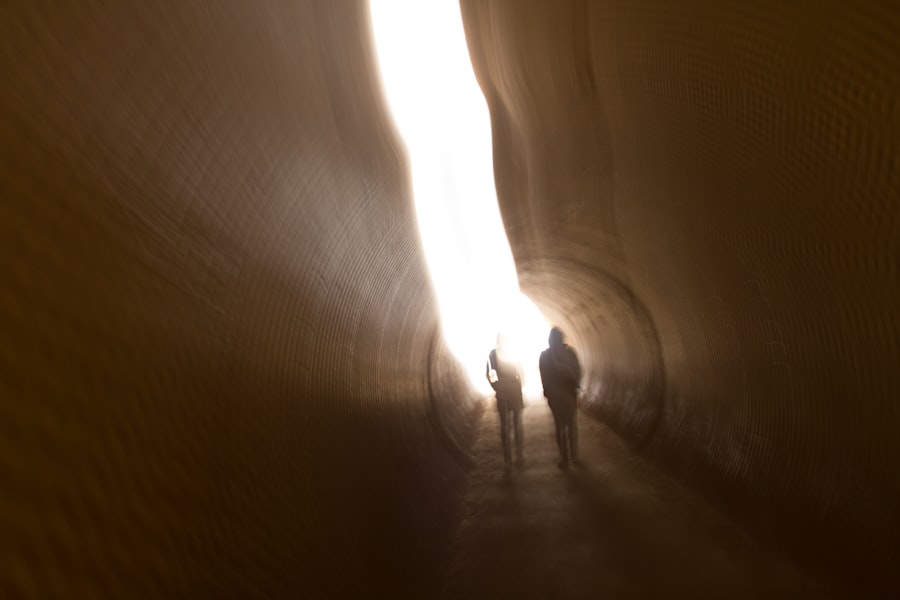The Drake Passage, a body of water that separates South America from Antarctica, is renowned for its tumultuous seas and rich marine biodiversity. Named after the English explorer Sir Francis Drake, who navigated these waters in the late 16th century, the passage has become a focal point for adventurers, scientists, and historians alike. Its strategic location serves as a critical maritime route, connecting the Atlantic and Pacific Oceans while also acting as a natural barrier between the two continents.
The Drake Passage is not merely a geographical feature; it embodies the spirit of exploration and the challenges posed by nature. The passage is often characterized by its unpredictable weather and rough seas, which have earned it a reputation as one of the most treacherous waterways in the world. Despite these challenges, the Drake Passage remains a vital corridor for shipping and scientific research.
Its waters are teeming with life, making it an essential area for studying marine ecosystems and climate change. As such, the Drake Passage stands as a testament to both the beauty and ferocity of nature, drawing those who seek to understand its mysteries.
Key Takeaways
- The Drake Passage is a body of water between South America’s Cape Horn and the South Shetland Islands of Antarctica, known for its turbulent seas and challenging weather conditions.
- It is a crucial route for global ocean circulation and the exchange of marine life, making it a significant location for scientific research and exploration.
- The passage has a rich history of exploration and navigation, with early expeditions facing treacherous conditions and unknown dangers.
- The climate and weather patterns in the Drake Passage are characterized by strong winds, high waves, and rapidly changing conditions, making it one of the most challenging maritime environments in the world.
- The region is home to unique flora and fauna, including seabirds, whales, and seals, making it a hotspot for wildlife enthusiasts and researchers.
Geographic Location and Significance
Geographically, the Drake Passage lies between Cape Horn at the southern tip of South America and the Antarctic Peninsula. It spans approximately 800 kilometers (500 miles) in width, making it one of the narrowest points of oceanic separation between two continents. This unique positioning not only facilitates maritime navigation but also plays a crucial role in global ocean currents.
The passage is a key component of the Antarctic Circumpolar Current, which influences weather patterns and marine life across vast regions of the Southern Hemisphere. The significance of the Drake Passage extends beyond its geographical features. It serves as a critical link for international shipping routes, particularly for vessels traveling between North America and Asia.
The passage is also vital for scientific research, as it provides access to some of the most pristine marine environments on Earth. Researchers study the unique oceanographic conditions of the Drake Passage to gain insights into climate change, marine biodiversity, and the health of global oceans. Thus, its geographic location is not only pivotal for navigation but also for understanding broader environmental issues.
Historical Exploration and Navigation

The history of exploration in the Drake Passage is rich and varied, marked by tales of bravery and discovery. Sir Francis Drake was among the first Europeans to navigate these waters in 1578 during his circumnavigation of the globe. His journey through the passage was fraught with peril, as he faced fierce storms and treacherous waves.
This early exploration laid the groundwork for future navigators who would follow in his wake, each contributing to the understanding of this formidable body of water. In subsequent centuries, the Drake Passage became a focal point for explorers seeking to chart new territories and expand their knowledge of the Southern Hemisphere. Notable figures such as James Cook and Ernest Shackleton ventured into these waters, driven by their quests for discovery and adventure.
Their expeditions not only advanced maritime navigation techniques but also provided valuable insights into the geography and ecology of Antarctica. The legacy of these explorers continues to inspire modern adventurers and researchers who traverse the passage today.
Climate and Weather Patterns
| Climate and Weather Patterns | Metrics |
|---|---|
| Average Temperature | 25°C |
| Annual Precipitation | 1000 mm |
| Humidity | 70% |
| Wind Speed | 15 km/h |
The climate of the Drake Passage is notoriously volatile, characterized by strong winds, heavy precipitation, and rapidly changing weather conditions. The region experiences a subpolar maritime climate, which means that temperatures can fluctuate dramatically even within a single day. The convergence of cold Antarctic waters with warmer currents from the north creates an environment ripe for storms, often resulting in rough seas that can challenge even the most experienced mariners.
Weather patterns in the Drake Passage are influenced by various factors, including ocean currents and atmospheric conditions. The infamous “Roaring Forties,” a belt of strong westerly winds found in the Southern Hemisphere, often intensifies storms in this region. As a result, sailors navigating these waters must be prepared for sudden changes in weather that can turn calm seas into turbulent ones within moments.
Understanding these climatic conditions is essential for safe navigation and has significant implications for scientific research focused on climate change and its effects on marine ecosystems.
Unique Flora and Fauna
The Drake Passage is home to an astonishing array of flora and fauna that thrive in its cold, nutrient-rich waters. The region’s unique marine ecosystem supports a diverse range of species, including krill, which serves as a crucial food source for larger animals such as whales, seals, and seabirds. The presence of these species highlights the ecological importance of the passage as a feeding ground for many migratory animals that travel between Antarctica and other regions.
In addition to its marine life, the Drake Passage is surrounded by islands that host unique terrestrial ecosystems. These islands are often home to various species of penguins, seabirds, and seals that have adapted to the harsh conditions of their environment. The biodiversity found in this region is not only vital for maintaining ecological balance but also serves as an important area for scientific research focused on understanding how climate change impacts marine habitats.
The unique flora and fauna of the Drake Passage exemplify nature’s resilience and adaptability in one of the world’s most challenging environments.
Challenges and Dangers of Crossing

Crossing the Drake Passage presents numerous challenges and dangers that have earned it a fearsome reputation among sailors and adventurers alike. The unpredictable weather patterns can lead to sudden storms that create towering waves and treacherous conditions. Many vessels have encountered difficulties while navigating these waters, with some even succumbing to the fierce elements.
Moreover, the isolation of the Drake Passage adds another layer of risk for those who venture into its depths. In case of emergencies or mechanical failures, assistance may be hours or even days away due to its remote location.
This isolation necessitates thorough preparation and planning before embarking on a journey through these waters. Sailors must be equipped with not only navigational skills but also an understanding of weather patterns and emergency protocols to ensure their safety while crossing this notorious passage.
Scientific Research and Discoveries
The Drake Passage has become a hub for scientific research due to its unique ecological characteristics and its role in global ocean currents. Researchers from around the world flock to this region to study its marine life, oceanography, and climate dynamics. The passage serves as an ideal natural laboratory for investigating how climate change affects marine ecosystems and influences global weather patterns.
One significant area of research focuses on krill populations in the Drake Passage, as these small crustaceans are vital to the Southern Ocean’s food web. Scientists study their breeding habits, migration patterns, and responses to changing environmental conditions to better understand their role in sustaining larger marine species such as whales and seals. Additionally, ongoing studies aim to monitor ocean temperature changes and their impact on marine biodiversity in this critical region.
The scientific discoveries made in the Drake Passage contribute valuable knowledge that informs conservation efforts and enhances understanding of global environmental issues.
Modern Navigation and Travel
Modern navigation through the Drake Passage has evolved significantly since the days of early explorers like Sir Francis Drake. Advances in technology have transformed maritime travel, allowing vessels to navigate these treacherous waters with greater precision and safety. GPS systems, radar technology, and sophisticated weather forecasting tools enable sailors to make informed decisions about their routes and avoid hazardous conditions.
Despite these advancements, navigating the Drake Passage still requires skill and experience due to its unpredictable nature. Mariners must remain vigilant and adaptable while at sea, ready to respond to sudden changes in weather or sea conditions. Modern vessels are often equipped with stabilizers designed to minimize rolling in rough seas, enhancing passenger comfort during crossings.
As travel through this iconic passage continues to grow in popularity, ensuring safe navigation remains a top priority for both commercial shipping operations and adventure tourism.
Tourism and Adventure Expeditions
In recent years, tourism in the Drake Passage has surged as adventurers seek to experience its breathtaking landscapes and unique wildlife firsthand. Cruise lines offer expeditions that take travelers through these storied waters, providing opportunities for whale watching, birding, and exploring remote islands inhabited by penguins and seals. The allure of crossing the infamous passage has become a rite of passage for many travelers eager to embrace adventure.
However, this increase in tourism also raises concerns about environmental impacts on fragile ecosystems within the region. Responsible tourism practices are essential to ensure that visitors can enjoy the beauty of the Drake Passage without compromising its ecological integrity. Tour operators are increasingly adopting sustainable practices that prioritize conservation efforts while providing educational experiences about the importance of protecting this unique environment.
Environmental Concerns and Conservation Efforts
The ecological health of the Drake Passage faces numerous threats stemming from climate change, pollution, and increased human activity in recent years. Rising ocean temperatures have been linked to shifts in marine species distributions, which can disrupt established food webs within this delicate ecosystem. Additionally, pollution from shipping traffic poses risks to marine life through oil spills or plastic waste entering these pristine waters.
In response to these challenges, various conservation efforts have been initiated to protect the unique biodiversity found within the Drake Passage. International organizations collaborate with governments to establish marine protected areas aimed at safeguarding critical habitats for vulnerable species such as whales and seals. Ongoing research initiatives focus on monitoring environmental changes while promoting awareness about sustainable practices among tourists visiting this remarkable region.
Future Prospects and Developments
Looking ahead, the future prospects for the Drake Passage are shaped by both opportunities and challenges related to climate change and human activity. As global temperatures continue to rise, scientists anticipate further shifts in ocean currents that could impact marine ecosystems within this region. Understanding these changes will be crucial for developing effective conservation strategies aimed at preserving biodiversity in light of evolving environmental conditions.
Moreover, advancements in technology may enhance navigation safety while promoting sustainable tourism practices within the Drake Passage. As awareness grows about environmental issues facing this iconic waterway, there is potential for increased collaboration among stakeholders—ranging from researchers to tour operators—to ensure responsible stewardship of its natural resources. Ultimately, fostering a balance between exploration and conservation will be essential for safeguarding the unique beauty and ecological significance of the Drake Passage for generations to come.
The Drake Passage, often described as resembling a snake due to its winding currents and turbulent waters, is a fascinating subject for oceanographers and geographers alike. This narrow body of water between the southern tip of South America and Antarctica is notorious for its challenging navigation conditions, which are influenced by the powerful Antarctic Circumpolar Current. For those interested in exploring more about the geographical and oceanographic significance of the Drake Passage, a related article can be found on MyGeoQuest. This article delves into the unique characteristics of the passage and its impact on global ocean circulation. You can read more about it by visiting mygeoquest.
com/sample-page/’>this page.
WATCH NOW! Drake Passage: Earth’s Deadliest Waters Revealed
FAQs
What is the Drake Passage?
The Drake Passage is the body of water between the southern tip of South America and the northern tip of the Antarctic Peninsula. It connects the southwestern part of the Atlantic Ocean with the southeastern part of the Pacific Ocean.
Why does the Drake Passage look like a snake?
The Drake Passage is known for its serpentine shape due to its winding and meandering path between South America and Antarctica. This shape is a result of the complex geological and tectonic forces that have shaped the region over millions of years.
What geological forces contributed to the formation of the Drake Passage?
The Drake Passage was formed by the separation of South America from Antarctica as a result of the movement of tectonic plates. This separation created a deep and narrow channel that has the appearance of a snake-like shape.
What is the significance of the Drake Passage?
The Drake Passage is significant for its role in the circulation of ocean currents and the exchange of marine life between the Atlantic and Pacific Oceans. It is also known for its notoriously rough and unpredictable seas, making it a challenging passage for ships and a key area for scientific research on oceanography and climate.
